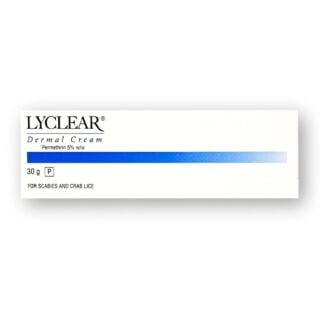What is scabies?

Scabies[1] is a common, highly contagious skin condition caused by Sarcoptes scabiei, which are tiny mites that burrow into the skin. This leads to intense itching, rashes and discomfort that often worsens at night.
Whether you’re dealing with a mild case or more severe forms like crusted (Norwegian) scabies[2], understanding the symptoms, causes and treatment options can help you effectively manage this itchy nuisance!
What is scabies?
Scabies is an infestation of the skin by scabies mites. These tiny, microscopic mites are highly contagious and can spread quickly through close contact, such as skin-to-skin contact, making it common in households, nursing homes and among sexual partners.
The mites burrow into the top layer of the skin to lay eggs, causing an allergic reaction that leads to itching and a distinctive rash.
What does scabies look and feel like?
A scabies rash appears as small, red bumps, often forming in lines where the mites have burrowed. It’s common to see the rash in areas like the wrists, elbows, between the fingers, and around the waistline.
The rash can be more severe and widespread in people with weakened immune systems, such as those with crusted scabies, a rare and very contagious type.
Key symptoms of scabies include:
- Intense itching, especially at night
- Tiny, red bumps or blisters
- Thin, wavy lines that indicate the mites’ burrowing
Types of scabies
Typical scabies
Involves fewer mites and shows symptoms (mentioned above) mainly in the skin folds.
Crusted (Norwegian) scabies
People with crusted scabies often have weakened immune systems. This severe type involves thick, crusty patches of skin teeming with mites. It’s extremely contagious and often requires aggressive treatment.
Nodular scabies
Nodular scabies[3] is when firm, itchy bumps (nodules) appear, often in sensitive areas like the armpits or groin. These bumps are caused by an allergic reaction to the mites and can last even after the mites are gone.
While they aren’t a sign of active scabies, they can still be very itchy and may need extra treatment, like steroid creams or antihistamines, to help with the discomfort.
Early signs of scabies
Symptoms of scabies may not appear immediately. In fact, it can take up to 4-6 weeks after exposure for signs to show up, especially in people who have never had it before.
Post-scabies symptoms
Even after treating scabies, the itching and rash may linger for a few weeks. This is called post-scabies syndrome [4]and includes:
- Ongoing itching due to the body’s allergic reaction to dead mites and their waste
- Red bumps or nodules that can persist, especially in sensitive areas
If symptoms do not resolve after several weeks, consult your GP, as you may need further treatment.

How do you get scabies?
The mites are spread through prolonged physical contact, making close contact the most common method of transmission.
Scabies are very contagious and can spread rapidly in close-knit environments, especially among young children, sexual partners, and people living in shared spaces.
This can happen during activities like:
- Close physical contact. Prolonged touching, such as hugging or sexual contact with an infested person
- Sharing personal items. Although less common, using infected clothing, towels or bedding can also spread the mites
- Contact in communal settings. Scabies outbreaks are common in places like nursing homes, childcare centres and dormitories
Scabies prevention
Avoid prolonged skin-to-skin contact with anyone showing signs of scabies to reduce the risk. Be sure to wash clothing, bedding and towels in hot water (at least 60°C) and dry them on high heat to kill any lingering mites.
If there has been exposure, regularly disinfect shared surfaces like furniture, carpets and mattresses. Additionally, since scabies are highly contagious, you must treat all household members, even if they don’t have symptoms.
Diagnosing scabies
Diagnosing scabies typically involves a healthcare provider physically examining the affected areas. They may look for characteristic burrows, bumps and red rashes. In some cases, skin scraping might be taken to examine under a microscope for the presence of mites, eggs or mite faeces.
Scabies treatments
The most common treatment for scabies is permethrin cream (also known by the brand name Lyclear), which is applied all over the body and left on for 8-14 hours. Permethrin belongs to a group of insecticides called pyrethroids, which works by paralysing and killing any mite it comes into contact with.
Another popular scabies treatment is Derbac M Liquid, which contains the active ingredient malathion, a medicine that belongs to a class of drugs known as organophosphates. It works by paralysing and killing live mites and eggs.
Your healthcare provider may offer oral ivermectin[5] for severe cases, such as crusted scabies, or if topical treatments aren’t effective. This oral medication is particularly useful for patients who cannot use creams or have a widespread infestation.
While medication works to kill the mites, the itching and rash may persist for a while. Anti-itch lotions and antihistamines can help soothe the symptoms during this time, making the recovery process more comfortable. An ideal product to use would be Eurax Anti-Skin Irritation Cream that's used to relieve itching and skin irritation from a number of conditions, including scabies.
Additionally, it’s common for the rash and itching to continue for up to four weeks after treatment. This lingering discomfort is due to the body's allergic reaction to the dead mites and their waste. However, a second round of treatment may be necessary if new spots or intense itching appear beyond this period.
Scabies home treatments – do they work?
Many people search for natural treatments or non-prescription options for scabies. Common home remedies may include:
- Tea tree oil, which is known for its antimicrobial properties. Although this may help to reduce itching, it isn’t a cure
- Aloe vera, which helps to soothe irritated skin; again, this won’t eliminate the mites
- Neem oil may relieve symptoms, but it’s not a proven treatment
While home remedies may offer temporary relief, they are not a substitute for medical treatments to eliminate the mites.

It's crucial to recognise the symptoms early and seek proper treatment, whether you’re dealing with typical scabies or more severe forms like crusted scabies.
Diagnosing scabies involves examining the skin and looking for the tell tale signs of an infestation. The best treatment approach includes prescription medications, good hygiene, and preventive measures to avoid reinfestation.
If you or someone close to you experiences symptoms of scabies, speak to a pharmacist for advice; alternatively, you can buy scabies treatments with us today that we’ll deliver discreetly to your door.
With the right care, you can effectively eliminate the mites and get relief from the itching and discomfort, helping you return to healthy, itch-free skin.









